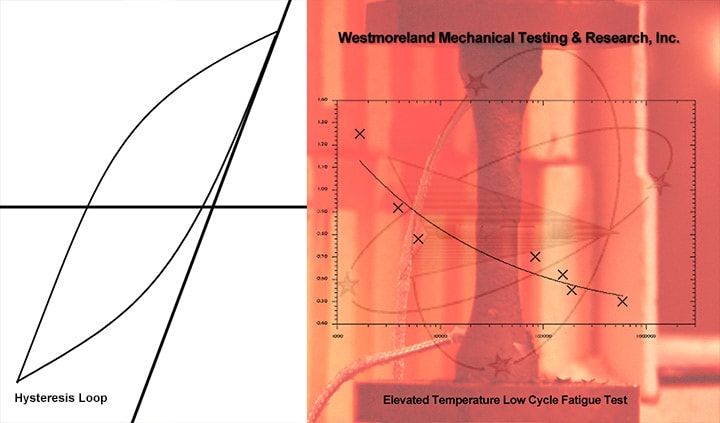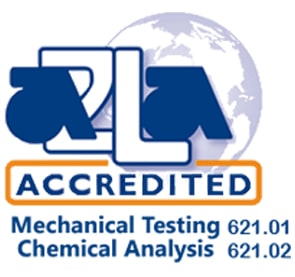Low-Cycle Fatigue Testing (LCF)

Materials used in aerospace and other advanced applications undergo extensive testing to understand the materials’ behavior in various loading conditions and harsh environments. Westmoreland Mechanical Testing & Research continues to be a pioneer in low cycle fatigue (LCF) testing, a critical component in ensuring product safety and advancing materials science.”
Expedited Low Cycle Fatigue Testing Services Are Available- Contact Us Today!
- Customized Servo-Hydraulic Test Equipment
- Extensive Scope and Comprehensive Data Unique to Each Test
- Temperature Ranges from Cryogenic to 2400°F
- Sample Sizes Capacity Ranges from 25grams to 1,000,000lbs
- Computer Data Acquisition for Accurate, Timely Results
- What Is Low Cycle Fatigue?
- What Are Common Low Cycle Fatigue Industry Applications?
- What Strain Variables Are Defined By the Customer?
- What Are the Stages of Low Cycle Fatigue?
- Low Cycle Fatigue Testing Solutions
What Is Low Cycle Fatigue Testing?
For low cycle fatigue testing (LCF), the test is run in strain control with the load as a dependent variable. LCF is characterized by high amplitude, low-frequency plastic strains. Low cycle fatigue can be particularly useful in industries that rely on materials in temperature-varying and cyclic conditions including aerospace, architecture, automotive, oil and gas, and power generation industries.

What Are Common Low Cycle Fatigue Industry Applications?
Low cycle fatigue testing is necessary for a variety of industries that require analysis of a material that endures fatigue damage over its application. Applications in designing regarding size in aeronautics, architecture, and energy-producing industries are using LCF methods to analyze the integrity of materials under these type of pressure. For example, a building’s materials that often endures earthquakes may have a finite fatigue life possible and should be analyzed using low cycle fatigue criteria. The LCF results allow engineers to study materials in greater depth understand mechanical and metallurgical phenomena including crack growth, work-softening, strain concentration, and work hardening.
What Strain Variables Are Defined by the Customer?
The low cycle fatigue test is normally run in strain control with the load being a dependent variable. The strain variables that are usually defined by the customer are:
- Wave Shape (triangle/sinusoidal/trapezoidal)
- Frequency (Hz, opm, strain rate = strain%/sec)
- Maximum Target Strain or Strain Range (%)
- A-Ratio (amplitude/mean) or R-Ratio (minimum/maximum)
- Switch Point (Where specimen is switched from strain to load control - increasing frequency)
- Discontinue Test (Specified cycle count at when reached the test is terminated)

What Are the Stages of Low Cycle Fatigue Testing?
There are three stages to low cycle fatigue testing.
- The first stage is designed to detect crack initiation on a polished specimen.
- The second stage is propagation life, which occurs after initiation.
- The third stage is failure, which is usually determined by some percentage of load drop from a stable condition.
Low Cycle Fatigue Testing Solutions
Westmoreland Mechanical Testing & Research provides numerous customizable high cycle fatigue tests tailored to your specific product requirements including ISO and ASTM standards. WMT&R’s fatigue testing experience and capabilities are second to none and WMT&R’s facility is fully equipped to handle the complete range of fatigue testing methods. Low cycle fatigue tests are often performed at elevated temperatures. ASTM E606 is the standard test method for strain-controlled fatigue testing.
Data reported on this test includes peak stress and strain values for every cycle, hysteresis loops at customer-specified intervals, measured modulus values at beginning of test and near half-life, calculated and measured plastic strain values at beginning of test and near half-life.
For a Complete List of Fatigue Testing Services, Please Request A Quote or Call 724-537-3131.



